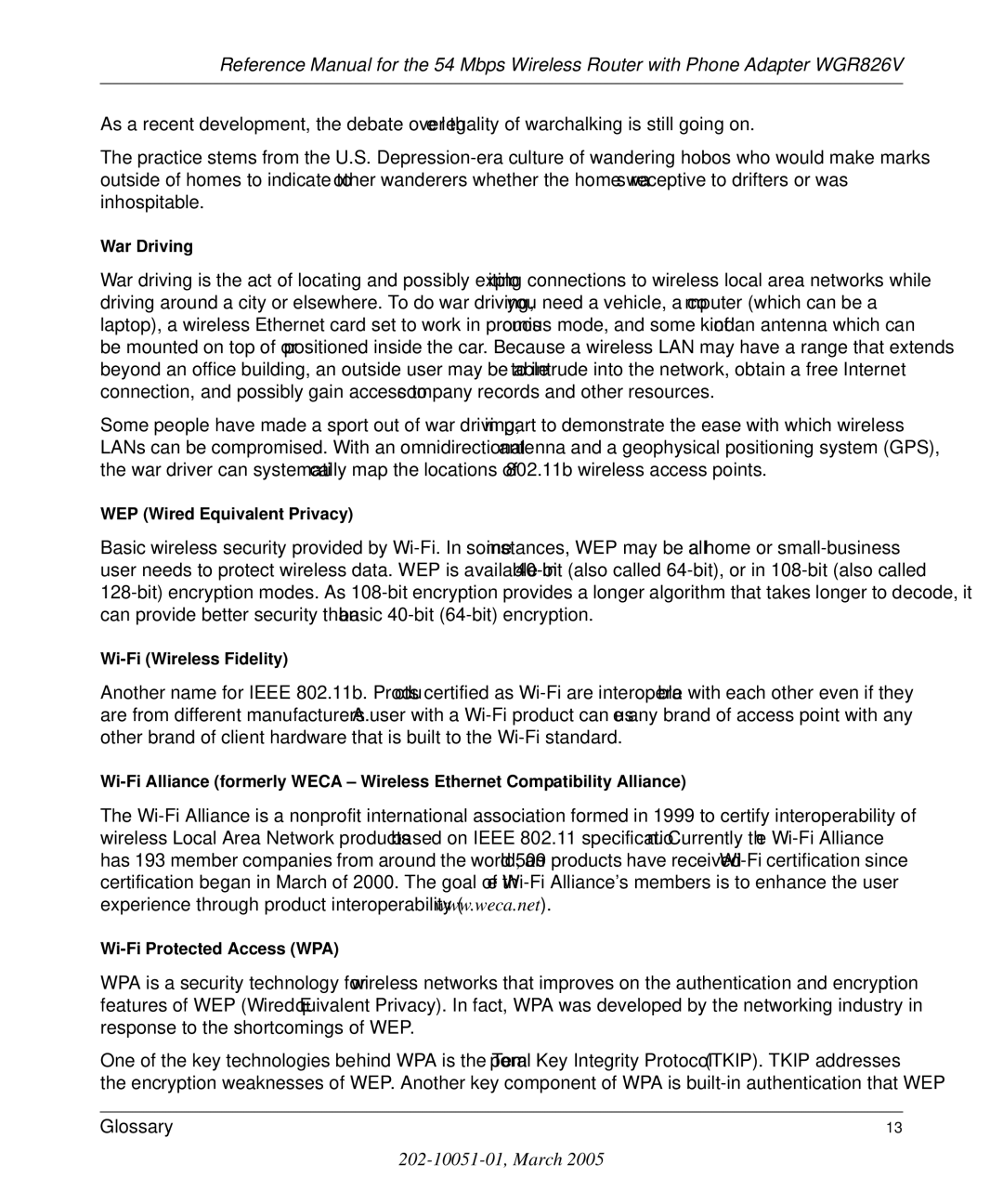
Reference Manual for the 54 Mbps Wireless Router with Phone Adapter WGR826V
As a recent development, the debate over the legality of warchalking is still going on.
The practice stems from the U.S.
War Driving
War driving is the act of locating and possibly exploiting connections to wireless local area networks while driving around a city or elsewhere. To do war driving, you need a vehicle, a computer (which can be a laptop), a wireless Ethernet card set to work in promiscuous mode, and some kind of an antenna which can be mounted on top of or positioned inside the car. Because a wireless LAN may have a range that extends beyond an office building, an outside user may be able to intrude into the network, obtain a free Internet connection, and possibly gain access to company records and other resources.
Some people have made a sport out of war driving, in part to demonstrate the ease with which wireless LANs can be compromised. With an omnidirectional antenna and a geophysical positioning system (GPS), the war driver can systematically map the locations of 802.11b wireless access points.
WEP (Wired Equivalent Privacy)
Basic wireless security provided by
Another name for IEEE 802.11b. Products certified as
The
WPA is a security technology for wireless networks that improves on the authentication and encryption features of WEP (Wired Equivalent Privacy). In fact, WPA was developed by the networking industry in response to the shortcomings of WEP.
One of the key technologies behind WPA is the Temporal Key Integrity Protocol (TKIP). TKIP addresses the encryption weaknesses of WEP. Another key component of WPA is
Glossary | 13 |
